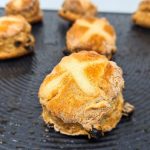The 21st January is World Religion Day, a chance to learn about and celebrate all religions.
This provides a great opportunity for pupils to find out what makes each religion unique and special, including the various ways that religious beliefs can influence food choices, dietary practices and customs.
Below are just some ways that food and religion are linked:
- Thanks-giving before or after a meal. Many people of religious faith believe that all good things are a gift from their god and offer short prayers or thankful phrases at the start and/or end of each meal.
- Fasting. This means not eating or drinking certain or all food, drink (including water), or both, for a period of time. It can be practised for a number of reasons, including: being a way to develop patience and self-control, serving as a reminder of less fortunate people in the world or commemorating tragedies, helping people to reflect and repent and to meditate and strengthen their faith.
- Exclusion of certain foods considered to be prohibited to demonstrate faith. Prohibited or restricted foods are mostly foods of animal origin, including some or all meats and fish and sometimes eggs. Restrictions are based on religious rules or interpretations of religious scriptures.
- Symbolic foods/drinks consumed as part of religious rituals. Given the importance of food for all living things since the beginning of time, it is not surprising that images associated with what we eat have become important in religious traditions. There are many examples of symbolic foods arising from religious stories including:
Eggs: represent new life in Christianity and fertility and rebirth in Hinduism.
Honey: represents sweetness in numerous faiths
Lamb: represents sacrifice
Olive oil: is a symbol of healing, strength and fuel
The Passover Seder plate: is used in a ceremonial meal as part of the Jewish faith. It is a special plate with space for six foods and symbolises the Exodus from Egypt.
Dates: in the Islamic faith, they are traditionally eaten at the Iftar meal and break the fast of Ramadan. The prophet Muhammad broke his fast by eating three dates.
Ghee: when made with cow’s butter is important in Hinduism and is used in many religious ceremonies.
- Feasting as part of religious festivals and celebrations. For centuries, feasting on large portions of ‘special’ foods has been at the centre of many religious festivals and celebrations. In the past, the types of food eaten, would generally be foods which were not available or affordable for everyday consumption, for example certain meats, spices, sugar, fruits and nuts which were rare and expensive. Although this is still true today to some extent, celebratory ‘days’ are becoming weeks, and many ‘luxurious’ foods are now more affordable and available year-round.
As food often plays an important role in religious beliefs, World Religion Day could be the perfect time to get pupils involved with food preparation and cooking. Take a look at a few of our recipes:
- Baked Sweet Potato Latkes: a type of traditional Jewish potato pancake.
- Pancakes: traditionally eaten the day before Lent begins in the Christian calendar.
- Hot Cross Scone: the PhunkyFoods take on a Hot Cross Bun, traditionally eaten by Christians at Easter time.
Other learning activities relating to religion and food could include:
- Providing pupils with a range of religious objects relating to food and drink and asking them to find out what they are used for and why they are important to that faith e.g. a Seder plate, and a Communion chalice.
- Encourage pupils to research ingredients that are important to a particular faith group and ask them to design a suitable recipe using them.
- Ask the pupils to think about foods that are special to them and ask them to explain why to a friend.
- Ask the pupils to research different faiths and create posters that show and explain the dietary customs and practices.




